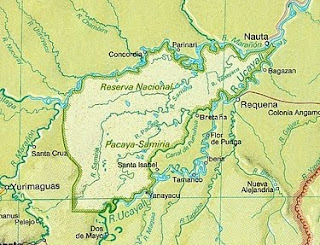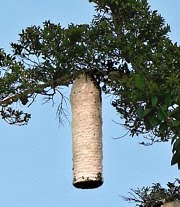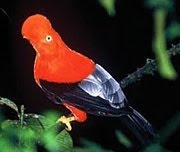No matter how remote the spot may be, there are still animals that are extremely difficult to encounter in the wild. They may be rare, secretive, or strictly nocturnal. Or it could be that their habitat is one that makes them hard to observe. One example of this is the Harpy Eagle, easily the world's most powerful bird of prey and so difficult to find that it holds a nearly mythical place in the world of wildlife enthusiasts.

Bill Lamar of GreenTracks has 35 years' experience in the rainforests of Latin America. During that time he has managed to see 11 Jaguars but only three Harpy Eagles. So, when travelers ask whether they might see a Harpy, our answer is always the same: don't count on it!
Recently a GreenTracks' expedition trip took us to the Río Samiria, a tributary of the lower Río Marañón, in the Peruvian Amazon Basin. The stunningly beautiful river, with its endless series of mirror like expanses of black water, is part of the Pacaya-Samiria Reserve, one of the most important wildlife enclaves in the Amazon. We had travelled for several days and had managed to get ourselves soaked by tropical showers on several occasions. After a morning hike we got caught in another downpour on the way back to the boat. It was time to head downstream towards Iquitos so we showered, had lunch, and took our positions on the deck watching for wildlife. The clouds were dark and low and it was a bit chilly, not at all encouraging for birds of any kind.
We had been navigating for an hour when a cry rose up from the front deck. A large, make that a VERY large bird of some sort was flying across the river. The Samiria at this point was quite wide and the huge bird was flying low and somewhat laboriously and practically on a collision course with our boat! To everyone's utter amazement, it was a Harpy Eagle! Despite their bulk, Harpys have comparatively short wings because they do most of their flying within the canopy as they hunt for sloths and monkeys. Flying for distances is not something these eagles make a practice of doing, but this bird evidently wanted to move to the opposite side of the river, and we were fortunate enough to be there when it happened.
Everyone gathered at the bow and we stared in amazement as the great bird winged its way ponderously across our path. Our boat was so near that it was easy to observe details without benefit of binoculars. And that was double luck because not everyone had their binocs with them on deck!
GreenTracks
Amazon Cruises






















